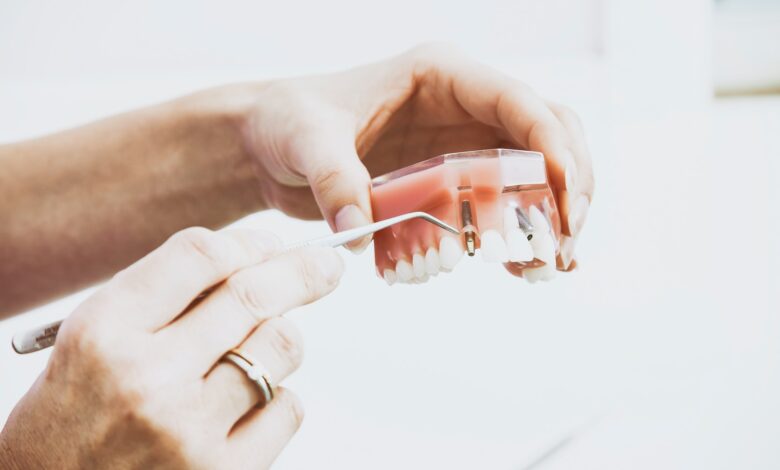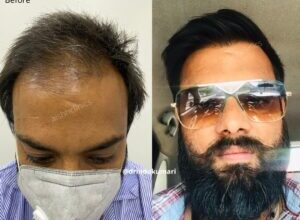Your Ultimate Guide to the Best Dental Clinic in Delhi

Are you on a quest to find the finest dental care in Delhi? Look no further! Welcome to Tooth Town, where your journey to exceptional dental health begins. Led by the distinguished Dr. Amandeep Singh Arora, Tooth Town is the epitome of pediatric dental care excellence, nestled in the heart of Delhi. With years of experience and an unparalleled level of expertise, Dr. Arora is your go-to expert for all your dental needs. This comprehensive guide will walk you through why Tooth Town is the best dental clinic in Delhi and introduce you to the best dentist in Vasant Vihar.
Unveiling Tooth Town: Your Trusted Dental Destination
Introduction to Tooth Town
Tooth Town, a prominent name in the realm of pediatric dentistry, is the ultimate destination for comprehensive dental care in Delhi. Dr. Amandeep Singh Arora, a seasoned dental expert, leads this clinic with a mission to provide top-notch dental care for patients of all ages, especially children. His commitment to excellence, combined with state-of-the-art technology, makes Tooth Town the best dental clinic in Delhi.
Meet Dr. Amandeep Singh Arora
The heart and soul of Tooth Town, Dr. Amandeep Singh Arora, is an esteemed name in the field of pediatric dentistry. With extensive experience spanning numerous years, Dr. Arora brings an unmatched level of expertise and passion to his practice. His dedication to ensuring a comfortable and pain-free experience for his young patients makes him the best dentist in Vasant Vihar.
What Sets Tooth Town Apart
Pediatric Dentistry Excellence
At Tooth Town, we specialize in pediatric dentistry, focusing on the unique needs of children. Our team is dedicated to creating a warm, welcoming, and child-friendly environment, ensuring a positive dental experience for your little ones. We understand the importance of early dental care and are here to guide your child’s oral health journey from their first tooth to adolescence.
State-of-the-Art Facilities
Tooth Town boasts state-of-the-art dental facilities equipped with cutting-edge technology. Our modern and comfortable clinic ensures that your experience is as pleasant as possible. From digital radiography to painless procedures, we utilize the latest advancements in dentistry to deliver top-quality care.
Comprehensive Dental Services
We offer a wide range of dental services, including preventive care, restorative procedures, orthodontics, and cosmetic dentistry. Whether you need a routine check-up or a more complex treatment, Tooth Town is your one-stop destination for all your dental needs.
Team of Experts
Our team of skilled and compassionate dental professionals is committed to delivering exceptional care. We understand the importance of personalized treatment and take the time to educate our patients on the best oral hygiene practices. Our commitment to your well-being sets us apart as the best dental clinic in Delhi.
Why Choose Tooth Town?
Exceptional Pediatric Dental Care
Tooth Town’s primary focus is on pediatric dentistry, making us the ideal choice for families with young children. We take pride in creating a nurturing environment that minimizes anxiety and fear in children, ensuring they have a positive association with dental visits.
The Best Dentist in Vasant Vihar
Dr. Amandeep Singh Arora’s reputation as the Best Dental Clinic in Delhi is well-deserved. His gentle and patient-centric approach, coupled with his vast experience, has earned him this distinction. Whether it’s your child’s first dental visit or you’re seeking specialized care, Dr. Arora and his team have you covered.
Advanced Technology for Optimal Care
Tooth Town invests in the latest dental technology to enhance the quality of care we provide. Our digital radiography reduces radiation exposure, while our painless procedures and sedation options ensure that even the most anxious patients have a comfortable experience.
A Holistic Approach to Oral Health
We believe that oral health is integral to overall well-being. That’s why our dental services extend beyond mere treatment. We educate our patients on preventive measures, diet, and lifestyle choices that contribute to their dental health. At Tooth Town, we are dedicated to your long-term well-being.
Our Comprehensive Dental Services
Preventive Dentistry
Preventive care is the cornerstone of lifelong oral health. Tooth Town offers regular check-ups, cleanings, and dental sealants to protect your teeth from decay. We also provide guidance on proper oral hygiene practices to maintain a healthy smile.
Restorative Dentistry
If you have dental issues, we have the solutions. From fillings and crowns to root canals and extractions, our restorative dentistry services are designed to bring your smile back to its best condition.
Orthodontics
For those seeking orthodontic treatment, Tooth Town offers braces, clear aligners, and other orthodontic solutions. We help you achieve a straight, beautiful smile that enhances your confidence.
Cosmetic Dentistry
A confident smile can transform your life. Our cosmetic dentistry services include teeth whitening, veneers, and smile makeovers to give you the dazzling smile you’ve always desired.
Emergency Dental Care
Dental emergencies can strike at any time. Tooth Town provides prompt emergency dental care to relieve your pain and address urgent dental issues.
Your Oral Health Matters
The Link Between Oral and Overall Health
Oral health is intricately connected to your overall well-being. Gum disease, for example, is linked to various systemic health issues, including heart disease, diabetes, and more. By maintaining your oral health, you are taking a significant step towards a healthier life.
A Preventive Approach
At Tooth Town, we emphasize the importance of preventive care. Regular check-ups can help identify potential issues before they become major problems. Early intervention not only preserves your oral health but also saves you time and money in the long run.
The Confidence of a Beautiful Smile
Your smile is often the first thing people notice about you. A beautiful, healthy smile can boost your self-confidence and improve your personal and professional life. Whether you need a simple teeth whitening or a more comprehensive smile makeover, Tooth Town has the expertise to make it happen.
Patient-Centric Care
Comfort and Convenience
We understand that a visit to the dentist can be intimidating for many. That’s why we’ve designed our clinic to provide a comfortable and pleasant experience. Our staff is friendly and accommodating, ensuring that you feel at ease from the moment you walk in.
Affordable Care
We believe that high-quality dental care should be accessible to everyone. Tooth Town offers competitive pricing and accepts a variety of insurance plans to make your dental care as affordable as possible.
Flexible Appointments
Your time is precious, and we respect that. We offer flexible appointment scheduling to accommodate your busy lifestyle. Whether you need an early morning or late evening appointment, we’re here to serve you.
Contact Tooth Town Today
Your search for the best dental clinic in Delhi ends here. Tooth Town, led by Dr. Amandeep Singh Arora, offers the most exceptional dental care in the heart of Delhi. Our focus on pediatric dentistry, advanced technology, and patient-centric care sets us apart as your trusted dental destination. We also take pride in being recognized as the best dentist in Vasant Vihar.
Don’t compromise on your oral health. To schedule an appointment or learn more about our services, contact Tooth Town today. Your smile deserves the very best, and we are here to make it happen. Your journey to exceptional dental care begins at Tooth Town.




